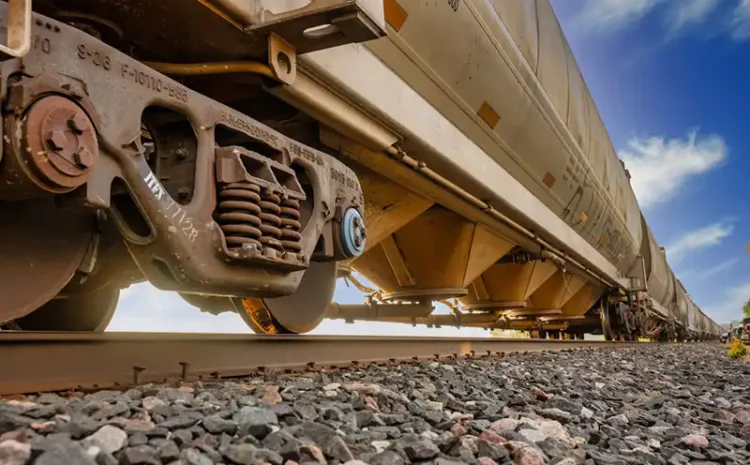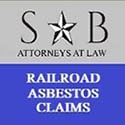
The use of asbestos in trains has been a topic of concern for many years. Asbestos, once hailed for its heat resistance and insulating properties, is now known to be a significant health hazard. Let’s explore the presence of asbestos in U.S. trains, the associated safety regulations, and the ongoing efforts to manage and mitigate the risks.
The History of Asbestos in Trains
In the early to mid-20th century, asbestos was a popular material used extensively in the construction and maintenance of trains. Its ability to withstand high temperatures made it an ideal choice for insulation in engine parts, boilers, and brake systems. However, despite its practical benefits, the health risks associated with asbestos were not fully understood until much later.
The Rise of Asbestos Usage
Asbestos was not only used in trains but also in various forms of transportation and construction. The mineral was incorporated into many components, including gaskets, insulation boards, and floor tiles. This widespread use was largely due to its durability and fire-retardant properties.
Discovery of Health Hazards
By the 1970s, the dangers of asbestos exposure became more widely recognized. Inhalation of asbestos fibers was linked to severe respiratory illnesses, including asbestosis, lung cancer, and mesothelioma. This led to increased scrutiny and the eventual regulation of asbestos use in various industries, including the railway sector.
Train Safety Regulations
The recognition of the health risks posed by asbestos led to the implementation of safety regulations aimed at protecting workers and passengers. The U.S. Environmental Protection Agency (EPA) and the Occupational Safety and Health Administration (OSHA) play significant roles in regulating asbestos use and ensuring safety standards are met.
EPA Regulations
The EPA has established strict guidelines for the handling and removal of asbestos-containing materials. These regulations are designed to minimize exposure and ensure that any asbestos removal is conducted safely. The EPA’s Asbestos Hazard Emergency Response Act (AHERA) also requires regular inspections and management plans for facilities that contain asbestos.
OSHA Standards
OSHA sets specific standards for occupational exposure to asbestos. These standards mandate that employers must provide training, protective equipment, and regular health monitoring for workers who may come into contact with asbestos. This is particularly important for those working in train maintenance and repair.
Current Situation in U.S. Trains
Despite the known risks, asbestos remains present in some older train models. The challenge lies in the safe management and removal of these materials without posing further risk to workers or passengers.
Asbestos Abatement Efforts
Many railway companies have initiated asbestos abatement programs to remove or encapsulate asbestos-containing materials. These efforts are crucial in reducing the potential for exposure and ensuring the safety of train environments. Such programs often involve specialized contractors who are trained in safe asbestos handling and disposal.
Monitoring and Maintenance
Regular monitoring and maintenance are essential in managing asbestos in trains. This includes routine inspections to ensure that any asbestos-containing materials remain intact and undisturbed. If damage or wear is detected, immediate action is taken to repair or remove the affected materials safely.
The Future of Train Safety
As technology advances, the railway industry continues to develop safer and more efficient train systems. The use of asbestos is now largely obsolete, with alternative materials offering similar benefits without the associated health risks.
Innovations in Train Design
Modern trains are designed with safety and sustainability in mind. New materials and technologies have replaced asbestos, providing effective insulation and fire protection without compromising passenger safety. These innovations are part of broader efforts to improve train efficiency and reduce environmental impact.
Continuing Education and Awareness
Educating workers and the public about the dangers of asbestos remains a priority. Ongoing training programs and awareness campaigns help ensure that the lessons learned from past asbestos use inform current and future practices. This commitment to education is vital in preventing exposure and protecting public health.
Sammons & Berry Law Can Help With Railroad Asbestos Exposure
The legacy of asbestos in trains serves as a reminder of the importance of safety and regulation in the transportation industry. While significant progress has been made in managing and mitigating asbestos risks, continued vigilance and innovation are necessary to ensure the safety of both workers and passengers.
As we move forward, the focus remains on creating a safer and healthier environment for everyone involved in the railway sector. By embracing new technologies and maintaining strict safety standards, the industry can continue to provide reliable and secure transportation for generations to come.
See if you qualify for compensation
Sammons & Berry, P.C.
800-519-1440
View our Google Listing
View our Facebook


